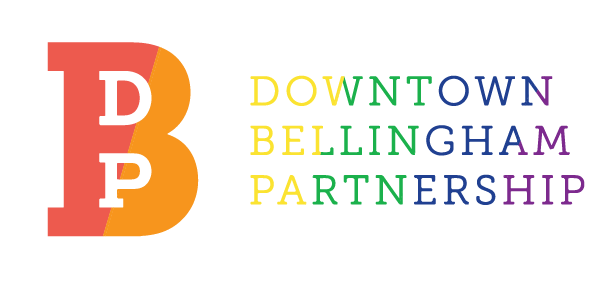Record return of hatchery Chinook salmon expected to Whatcom Creek
More than 7,000 Chinook salmon are expected to return to Whatcom Creek in downtown Bellingham this season thanks to an ongoing collaboration between Bellingham Technical College (BTC), Washington Department of Fish and Wildlife (WDFW), Northwest Indian Fisheries Commission (NWIFC), and the Lummi Nation and Nooksack Indian Tribe.
“We’re forecasting the largest return of Chinook on record back to Whatcom Creek over the next two months and are thrilled by how successful this partnership has been,” said Edward Eleazer, WDFW’s North Puget Sound Region Fish Program manager.
“These hatchery salmon provide prey for Southern Resident killer whales in important foraging areas, support recreational salmon fisheries in marine areas and lower Whatcom Creek as well as tribal treaty and youth fisheries, and help train the next generation of fisheries professionals at BTC — it’s a win-win-win,” said Eleazer.
"We have been working collectively and diligently to bring back salmon for all of our tribal people, as well as all Washington state residents and our future generations," said Lisa Wilson, vice chair of the Northwest Indian Fisheries Commission and a member of Lummi Nation leadership. "We created a 10-year, co-managed hatchery plan for these Chinook and we are now seeing the results of this hard work."
Chinook begin arriving at the mouth of Whatcom Creek in mid-August and will continue returning into October. Though they’re following the same instinctive urge as their cousins in nearby rivers, these hatchery-produced salmon are not intended to reproduce in the wild or even make it more than a mile up the urban creek.
The Chinook in Whatcom Creek originate from the Samish River, where WDFW’s Samish Hatchery staff take eggs and milt (sperm) from adult broodstock. At the hatchery WDFW is joined by students from BTC’s Fisheries and Aquaculture Sciences program who assist with the egg collection, spawning and fertilizing process before transferring more than half a million eggs annually to BTC’s Perry Center in Maritime Heritage Park.
There, students and faculty incubate the eggs until they hatch and grow into fry, then feed and rear the tiny Chinook until they are big enough to survive on their own. With support from NWIFC and Lummi Nation, they carefully clip their adipose fins to mark them as hatchery-raised salmon. Finally, the students and staff release the fish near where Whatcom Creek flows into Bellingham Bay—all with three specific goals in mind:
To provide an additional food source for struggling Southern Resident killer whales (SRKWs) during the salmon’s return migration through the Salish Sea. Increased hatchery production to increase food for orcas — particularly near foraging areas important for SRKW such as the San Juan Islands — was recommended by the Southern Resident Orca Task Force in its final report (PDF).
To support tribal and recreational salmon fishing opportunities throughout Puget Sound and in an accessible urban area in lower Whatcom Creek where a boat or other expensive fishing gear is not required.
To create opportunities for BTC students to learn how to raise salmon and operate a fish hatchery, preparing them for jobs with the state, Native American tribes, or other agencies or private aquaculture businesses.
“We ask Bellingham residents and visitors to please be respectful of state and tribal fishers,” said Julie Klacan, district fisheries biologist for WDFW. “The hatchery Chinook salmon returning to Whatcom Creek are a collaborative success story between Bellingham Technical College, the state, co-manager tribes, and the City of Bellingham.”
“The Chinook program has provided a wonderful expansion of the hands-on hatchery training for our students,” said Brittany Palm-Flawd, BTC Fisheries & Aquaculture Sciences Faculty and Hatchery Manager. “Not only does it help them build valuable skills, but they also get to see Washington’s co-management system in action. As the Chinook return to the college hatchery each year, BTC students really see their work make an impact on our fisheries and aquatic ecosystems."
The state-managed salmon fishery in lower Whatcom Creek is open Saturdays and Sundays only through Sept. 14. Fishing is closed Monday through Friday.
A valid fishing license and salmon Catch Record Card are required. Only hatchery Chinook may be retained; any other salmon caught must be released. Fishing is closed at night from one hour after official sunset to one hour before official sunrise.
An Anti-Snagging Rule is in effect during the state fishery, meaning fishing gear is restricted to a lure or bait with one single-point hook; check the regulations or Fish Washington mobile app for details. Snagging is defined as an effort to take fish with a hook and line in a manner that the fish does not take the hook or hooks voluntarily in its mouth.
The fishery is open from the Whatcom Creek mouth upstream to the footbridge below Dupont Street. WDFW and City of Bellingham have posted signs (PDF) near the fishing area boundaries.
Tribal fishers enrolled with the Lummi Nation or Nooksack Indian Tribe may fish Whatcom Creek according to their fishery rules and schedules. These co-managers have several special fisheries planned such as Tribal Youth Chinook Fishery days.
More information on tribal fishing and salmon fisheries co-management is available on this WDFW webpage or at nwtreatytribes.org.
Chum and pink salmon may also return to Whatcom Creek and must be released if caught by recreational anglers unless opened to retention under an emergency Fishing Rule Change.
Reports of suspected poaching or unlawful fishing can be sent to WDFW Police by calling 877-933-9847, emailing reportpoaching@dfw.wa.gov, or using the form at wdfw.wa.gov/about/enforcement/report.
The Washington Department of Fish and Wildlife works to preserve, protect and perpetuate fish, wildlife and ecosystems while providing sustainable fish and wildlife recreational and commercial opportunities.
The Northwest Indian Fisheries Commission (NWIFC) is a natural resources management support service organization for 20 treaty Indian tribes in western Washington.
